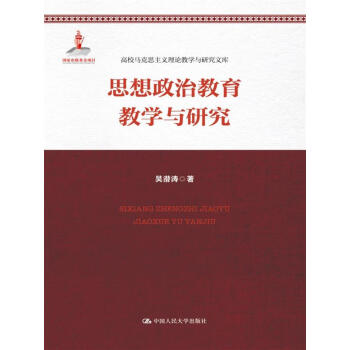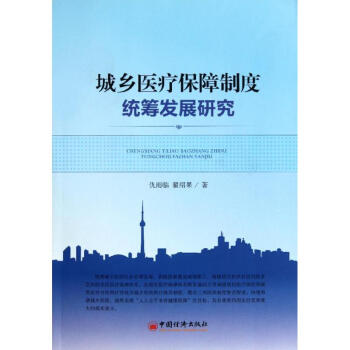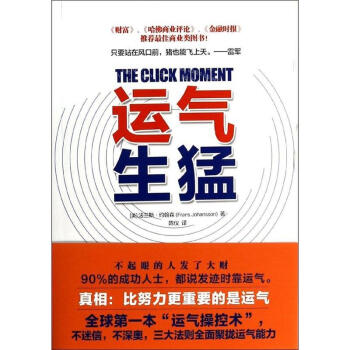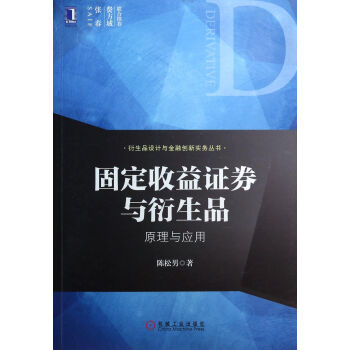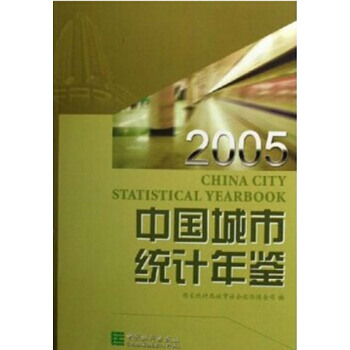![在中国(投资指南)(英文版) [China Guide: Invest in China ]](https://pic.tinynews.org/11233914/58d159e5Nb2f7c9e6.jpg)

具体描述
编辑推荐
“在中国”系列为指南类图书,专为来华旅游、学习工作及生活的外国朋友编写,以实用、可读性强的方式呈现中国多方面的资讯。本系列内容目前涉及旅游、投资、留学及电影文化等方面的,方便来华人员了解中国概况,从事商务活动以及留学深造等,同时介绍当下中国电影文化,引导外国人更好地融入中国本地的生活,具有很强的实用性。
内容简介
“在中国”系列为指南类图书,以实用、可读性强的方式呈现中国的资讯。本书为其中之一。本书将为外商介绍来华投资的基本注意事项:如中国的基本国情,经济和投资发展现状,税收和土地政策,主要的招商政策和引资项目等等;也大致介绍了外商来华投资的基本流程。
This investment guide book offers most authoritative information about China’s investment environment, including Chinese policies related to foreign investment, such as policy on taxation and policy on land use....
内页插图
目录
CONTENTS
Chapter Ⅰ GENERAL ASPECTS
Chapter Ⅱ LEGAL SYSTEM
Chapter Ⅲ FOREIGN INVESTMENT POLICY IN CHINA
Chapter Ⅳ DISTRIBUTION AND SUPPLY-CONTRACTUAL ARRANGEMENTS
Chapter Ⅴ INVESTMENT VEHICLES
Chapter Ⅵ MERGERS AND ACQUISITIONS
Chapter Ⅶ INSOLVENCY AND BANKRUPTCY
Chapter Ⅷ INDUSTRIAL AND INTELLECTUAL PROPERTY
Chapter Ⅸ TAX
Chapter Ⅹ EMPLOYMENT
Chapter Ⅺ REAL ESTATE
Chapter Ⅻ DISPUTE RESOLUTION AND PREVENTION
Appendix: CATALOGUE FOR THE GUIDANCE OF FOREIGN INVESTMENT INDUSTRIES
精彩书摘
1. Taxes Levied on FIEs
The main types of tax applicable to FIEs can be divided into two groups depending on the tax levying authorities: taxes levied by tax bureaus and customs duties levied by Customs:
A. Taxes levied by tax bureaus
I. Turnover taxes on business transactions, including:
? Value Added Tax.
? Business Tax.
? Consumption Tax.
II. Taxes on income, including:
? Enterprise Income Tax.
? Individual Income Tax.
III. Taxes on property and on certain transactions or expenditures, including:
? City Maintenance and Construction Tax.
? Deed Tax.
? Stamp Duty.
B. Customs duties levied by Customs
1.1 Value Added Tax
Value Added Tax applies when entities sell, manufacture, process, or repair tangible goods in, or import such goods to, China. Different taxation methods apply to normal and small-scale taxpayers, and there are also provisions on Value Added Tax refunds and exemptions. It is advisable for foreign investors to carry out tax planning in advance of establishing FIEs, which are subject to Value Added Tax in China.
1.1.1 Value Added Tax regime for normal taxpayers
Enterprises subject to Value Added Tax must go through a special procedure to be recognized as normal taxpayers; otherwise they will fall into the category of small-scale taxpayers. The general Value Added Tax rate for normal taxpayers is 17%, and a reduced rate of 13% is applied to certain products, e.g., agricultural products, books, water, gas, oil and milk.
To compute the Value Added Tax payable, normal taxpayers need to separately calculate the output tax and the input tax for the current period. They are entitled to issue special Value Added Tax invoices. The input tax should be deducted from the output tax in order to calculate the Value Added Tax payable.
The formula for computing the tax payable is as follows:
Tax payable = Output tax payable for the current period ? Input tax for the current period
Output tax = Sales volume in the current period x Applicable tax rate
1.1.2 Value Added Tax regime for small-scale taxpayers
The requisites for qualifying as a small-scale taxpayer are set by the relevant regulations. Unless they are recognized as normal taxpayers by the tax authorities through the recognition procedures, enterprises subject to Value Added Tax will usually pay that tax as small-scale taxpayers.
Until the end of 2008, small-scale taxpayers are taxed on the basis of the revenue derived from sales of goods or provision of taxable services at the Value Added Tax rate of 4% (for the commercial sector) or 6% (for the industrial sector). As from January 1, 2009, the aforementioned rate shall be 3% for both sectors.
The computing formula for the Value Added Tax payable by small-scale taxpayers is:
Tax payable = Sales amount x Applicable rate
Since small-scale taxpayers are not entitled to deduct input Value Added Tax from the tax payable, they are not, in principle, allowed to issue Value Added Tax invoices and must apply to the tax authorities each time before issuing a Value Added Tax invoice to normal taxpayers.
前言/序言
Introduction
In recent years, China has become one of the world’s leading economic powers (in 2010, it overtook Japan to become the second largest economy on the planet in GDP terms, behind the US). This economic development took place in the space of over 30 years as it has to be remembered that until the end of the 70s, China was closed to the outside world and during that period (first the Imperial reign, then its short experience as a republic, followed by the establishment of the People’s Republic, with The Great Proletarian Cultural Revolution), commercial relations between China and the outside world were virtually non-existent.
It should also be noted that following the breakup of the USSR, China repealed a number of the Sovietinspired laws it had passed and after the Cultural Revolution, China had no legal system for almost 20 years, which obviously greatly hindered the development of the country and its economy.
All of this changed with the reform and opening up of the country instigated by Deng Xiao Ping who, with his “open door” policy, began, from 1979 onwards, to open China up to the world. This resulted in one of the greatest economic transformations the world has seen in recent times and which radically changed the position of China and the rest of the world. Subsequently, a growing and continuous flow of foreign investment began to enter China, and today it is the second largest recipient of foreign investment in the world.
Growing foreign investment in China has also given rise to massive legislative developments in the country, which has enacted thousands of important laws and rules in recent years, providing commercial transactions with increased legal certainty. To give you an idea of the scale of the legislative change that has taken place in China in recent times, in the last five years alone China has amended, inter alia, the following fundamental laws:
Catalog of foreign investments.
Company law.
Antitrust law.
Bankruptcy law.
Property law.
Real estate legislation.
It could almost be said that in recent years, China has completely overhauled its entire legal system.
Furthermore, China’s entry into the World Trade Organization (WTO) in 2001 obliged it to open up its economy to foreign investment to an even greater degree and left it with no choice but to amend and adapt a significant portion of its laws in order to comply with the commitments it assumed in the context of the WTO.
Lastly, it must be taken into account that despite all of the abovementioned progress, the Chinese economy is still not fully open to the outside world and, as a result, foreign investors still sometimes find themselves subject to a legislative framework that differs from that applicable to national investors. This, together with the obstacles inherent in a culture and language that are so different, makes it even more difficult for foreign investors to do business in China.
This ad hoc system of rules takes the form of laws and provisions that subject foreign investment to administrative authorizations and approvals, registrations, additional requirements and, in some cases, restrictions that allow the Chinese government to control and select the type of investment it wishes to attract. This difference in treatment used to have a positive aspect in terms of the policy on tax incentives for foreign investment, which the Chinese government applied paradoxically with the aim of standardizing the tax treatment of national and foreign investors until its almost total abolition in January 2008.
In addition to the above, it must be noted that the Chinese legal system, although to a lesser extent than one might think, is influenced by the peculiarities of its recent history and current political situation. For example, the ownership of land located in urban areas continues to belong to the Chinese state while land located in rural areas or on city outskirts belongs, in general, to collective economic organizations. Nevertheless, individuals and legal entities can hold a right to use land, (known as a land use right) for a period of time depending on each concession and on the use of the land in question (e.g. residential, industrial or educational). Moreover, and to greater extent following the reforms of recent years, labor legislation stands out for the protection it affords workers which, in certain areas, even rises above the levels to which we are accustomed in European countries with higher levels of protection. We hope this book will help minimize the difficulties described above, allowing foreign investors in China to reduce the uncertainties that are inherent in a country that is so different from their own, and at the same time facilitate trade and investment between China and other countries.
用户评价
我对本书的语言风格充满了好奇。从我个人阅读的经验来看,一本成功的投资指南,需要用清晰、准确且易于理解的语言来传达复杂的信息。我希望这本书能够避免过于学术化或晦涩的术语,而是采用一种平实、生动的叙述方式,让非专业人士也能够轻松掌握。同时,我还期望书中能够包含一些真实的案例分析,通过生动的故事来阐释投资理论,这样的内容会更加引人入胜,也更容易让人产生共鸣。想象一下,如果书中能够讲述一些中国本土企业成功的崛起故事,或者一些跨国公司在中国市场遇到的挑战与机遇,那将会是多么引人入胜的阅读体验!我也希望作者能够以一种客观、中立的立场来介绍中国市场,既不夸大其词,也不妄加贬低,而是用数据说话,用事实支撑,为读者提供一个全面、真实的中国投资图景。
评分这本书的封面设计给我留下了深刻的第一印象。整体的色调偏向沉稳大气,主色调可能是深蓝色或墨绿色,搭配金色的字体,立刻营造出一种专业、权威的感觉。封面的中央,"China Guide" 这个标题以一种醒目且略带艺术感的字体呈现,仿佛在邀请读者一同探索中国的投资奥秘。标题下方,"Invest in China" 的副标题清晰地表明了本书的核心内容,语气坚定而富有号召力。值得一提的是,封面还可能巧妙地融入了一些具有中国元素的图案,比如祥云、龙纹,或者现代化的建筑剪影,这些细节的处理,既体现了对中国文化的尊重,也暗示了本书内容可能涵盖了从传统到现代的多元视角。我个人非常喜欢这种既有深度又不失美感的封面设计,它让我对接下来的阅读充满了期待,感觉这本书不仅仅是一本工具书,更是一件值得收藏的艺术品。我甚至在想,作者在封面设计上投入的这份心思,是否也预示着他在内容上的严谨与用心呢?这本书的厚度也适中,既不会让人望而却步,又显得内容充实,拿在手里非常有分量感。
评分我对于这本书的实用性和时效性有着极高的期望。毕竟,投资决策是基于当下和未来的信息,而一个滞后的指南,其价值将大打折扣。我希望这本书能够提供最新的中国经济数据、最新的政策法规解读,以及最前沿的市场趋势分析。特别是对于那些政策变化频繁的领域,比如外商投资政策、税收优惠等,我希望书中能够给出详细的、最新的说明,并预测未来可能的走向。此外,我非常期待书中能够提供一些实操性的建议,比如如何在中国寻找可靠的合作伙伴、如何进行尽职调查、如何处理潜在的法律纠纷等。如果书中还能包含一些与投资相关的资源列表,例如政府部门的联系方式、行业协会的网站、以及其他有用的信息渠道,那将大大提高这本书的实用价值。总而言之,我希望这本书能够成为我未来在中国进行投资决策时,一个可靠、及时、且可操作的决策助手。
评分当我翻开这本书,最先吸引我的是其内容的编排方式。我是一个对信息获取效率要求比较高的人,而这本书在目录设计上就展现出了其专业性。它并非简单地将主题罗列出来,而是层层递进,从宏观的经济环境分析,到具体的行业洞察,再到实践操作的细节指导,逻辑清晰得令人赞赏。特别是关于风险评估和规避的部分,虽然我还没来得及深入阅读,但仅仅是看到章节名称,比如“潜在的法律风险与应对策略”或者“市场波动下的投资保值之道”,就足以让我感受到作者对读者负责任的态度。这种细致入微的考量,对于初涉中国市场的投资者来说,无疑是一份宝贵的安全网。我个人尤其看重信息的可操作性,所以我特别期待书中关于“如何在中国建立商业联系”或“税务优惠政策解读”这类实用章节的内容。整体来说,这本书的结构设计,就像一个精心搭建的知识框架,让人能够循序渐进地掌握所需的知识,而不是被海量的信息淹没。
评分这本书的深度和广度是我最看重的一点。作为一个在投资领域摸爬滚打多年的老手,我深知信息更新换代的速度有多快,尤其是在像中国这样充满活力的经济体中。我希望这本书不仅仅能提供基础的宏观经济数据和政策解读,更能深入到一些细分领域的专业知识。比如,我对于中国在新能源、人工智能、生物科技等前沿产业的投资前景非常感兴趣。如果这本书能够提供对这些新兴产业的深入分析,包括其发展趋势、关键参与者、潜在的投资机会以及相关的风险提示,那将对我非常有价值。此外,我也希望书中能够涵盖中国不同地区(例如一线城市、二线城市、甚至一些经济特区)的投资特点和优势,帮助我更精准地定位投资目标。一个真正优秀的投资指南,应该能够满足不同层次读者的需求,既能为新手提供入门指导,也能为经验丰富的投资者提供深度洞察。
相关图书
本站所有内容均为互联网搜索引擎提供的公开搜索信息,本站不存储任何数据与内容,任何内容与数据均与本站无关,如有需要请联系相关搜索引擎包括但不限于百度,google,bing,sogou 等
© 2025 book.idnshop.cc All Rights Reserved. 静思书屋 版权所有

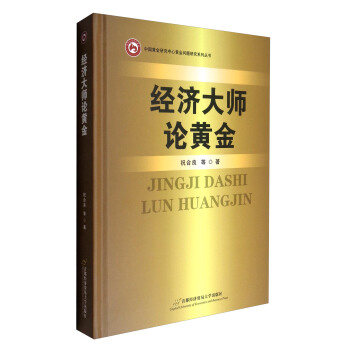
![移动金融(第2版)/高等院校移动商务管理系列教材 [Mobile Finance] pdf epub mobi 电子书 下载](https://pic.tinynews.org/12155583/59a3ec24N60bc73fd.jpg)

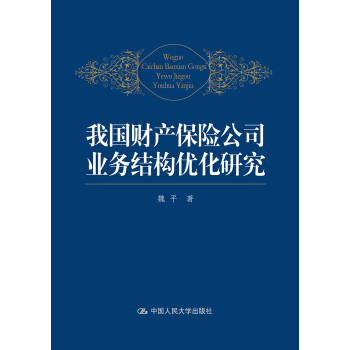
![城市商业银行发展报告(2016) [Report on the Development of City Commercial Banks in China] pdf epub mobi 电子书 下载](https://pic.tinynews.org/12327772/5ac48aedN239778f4.jpg)

